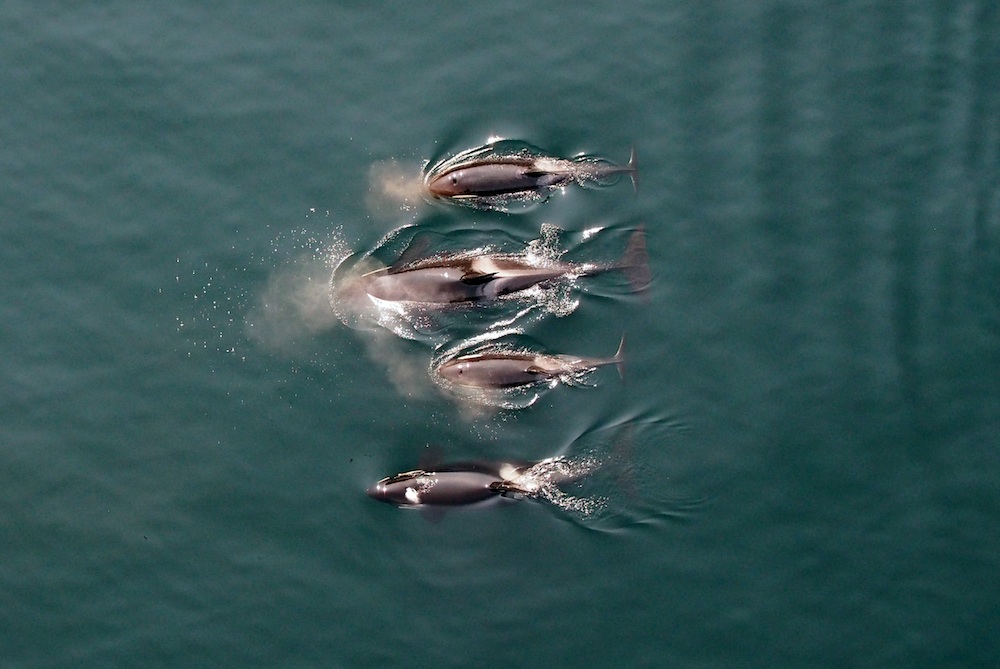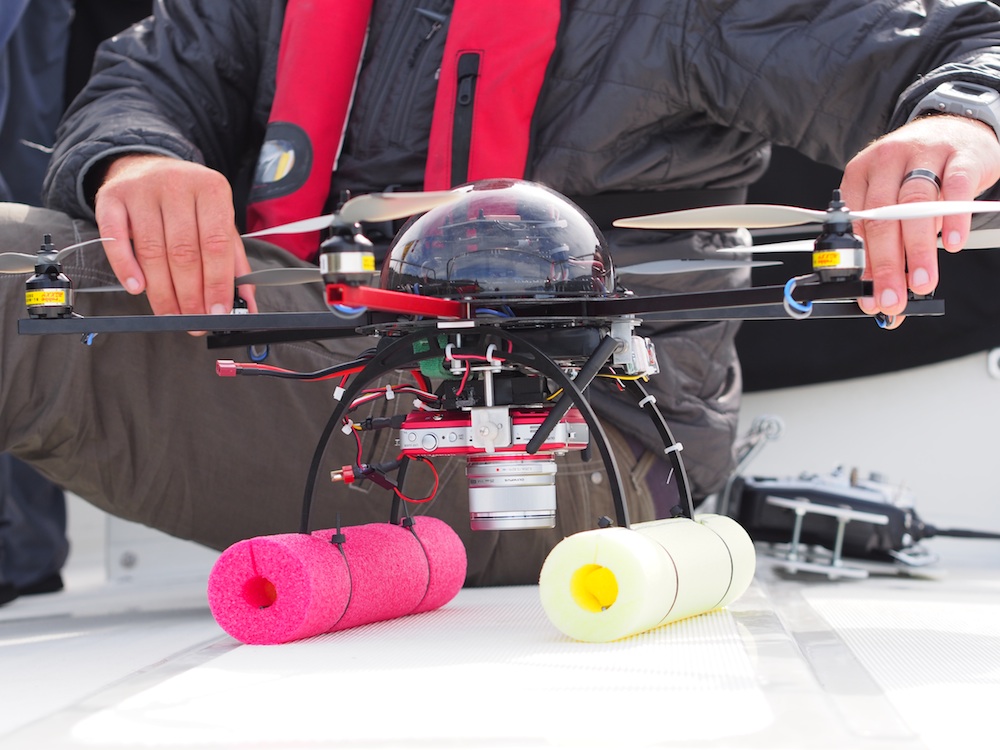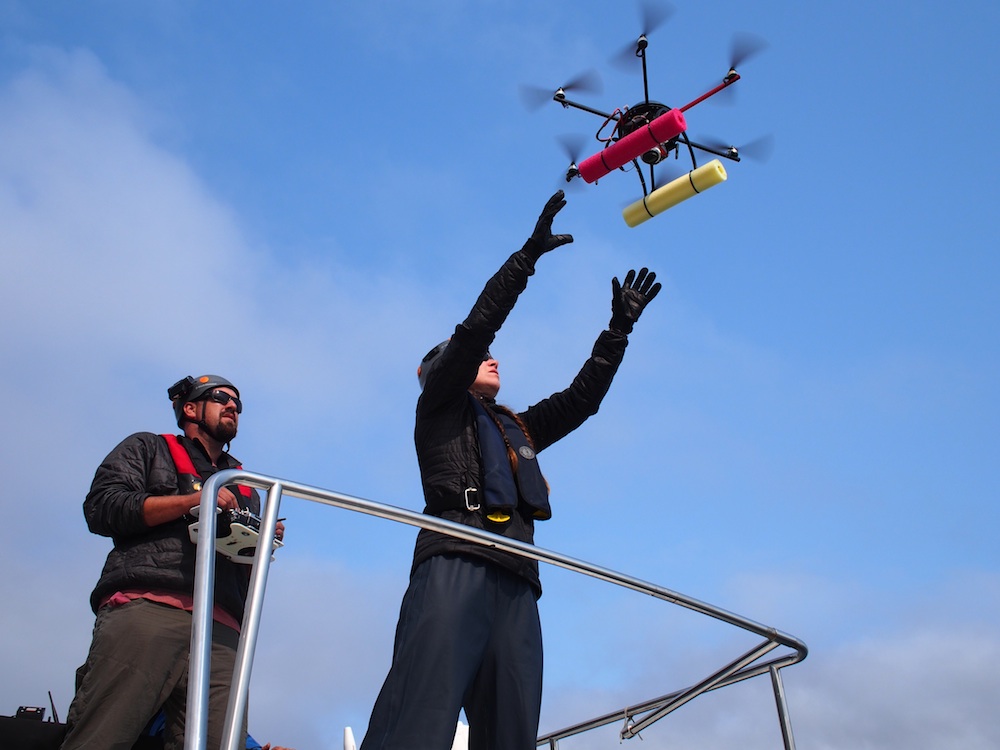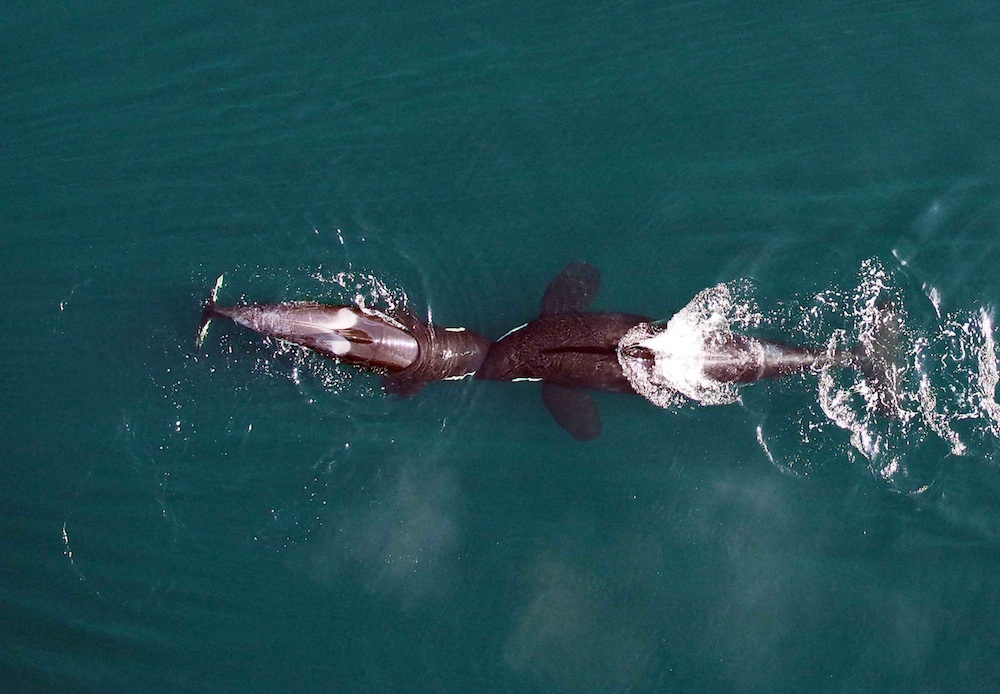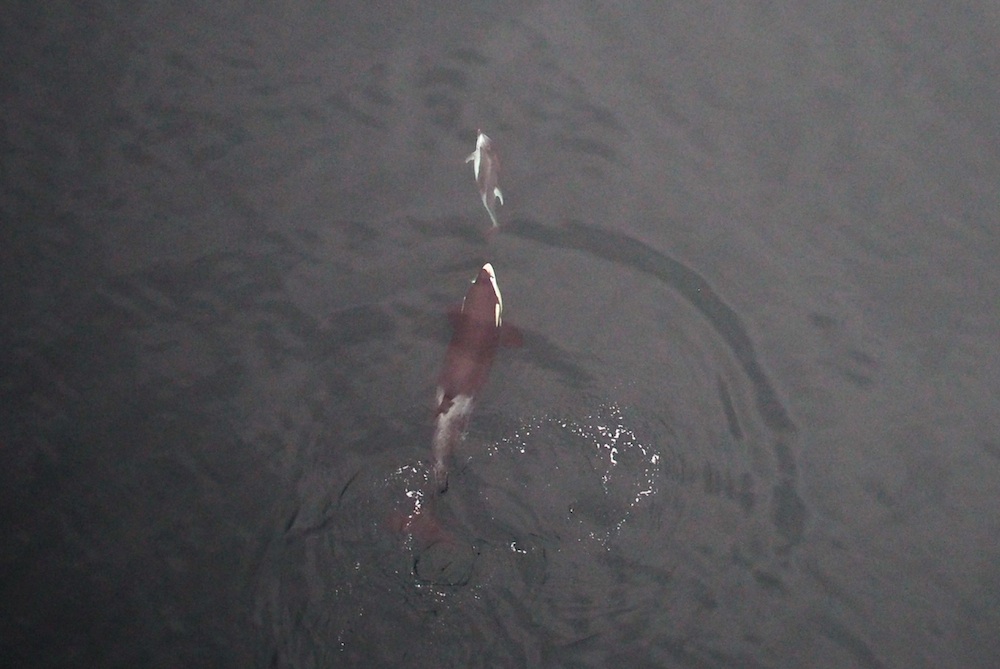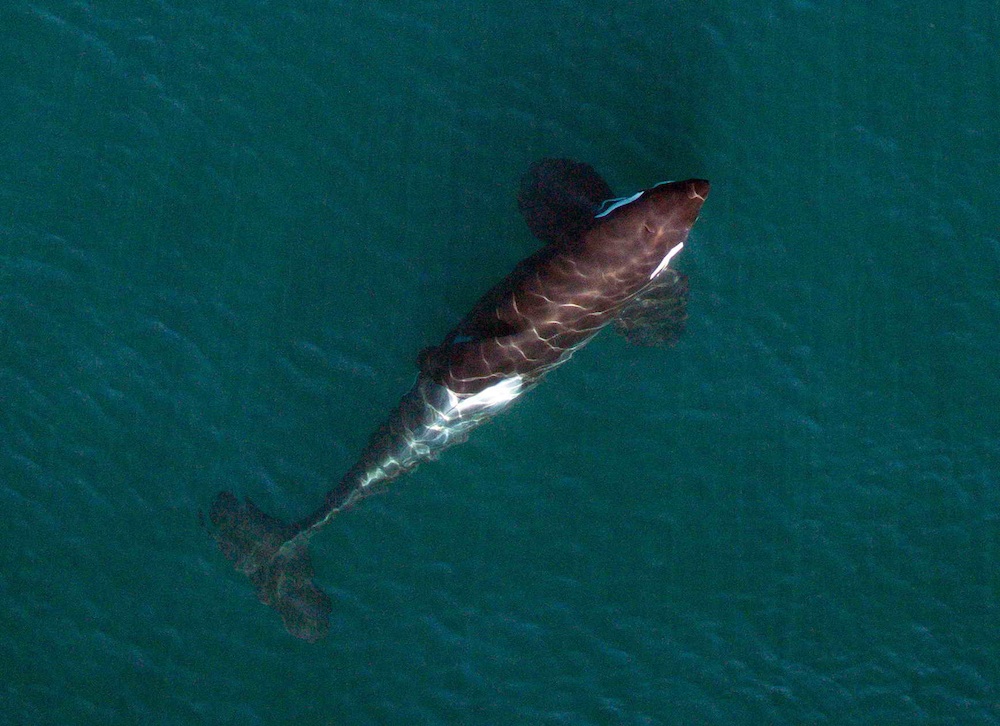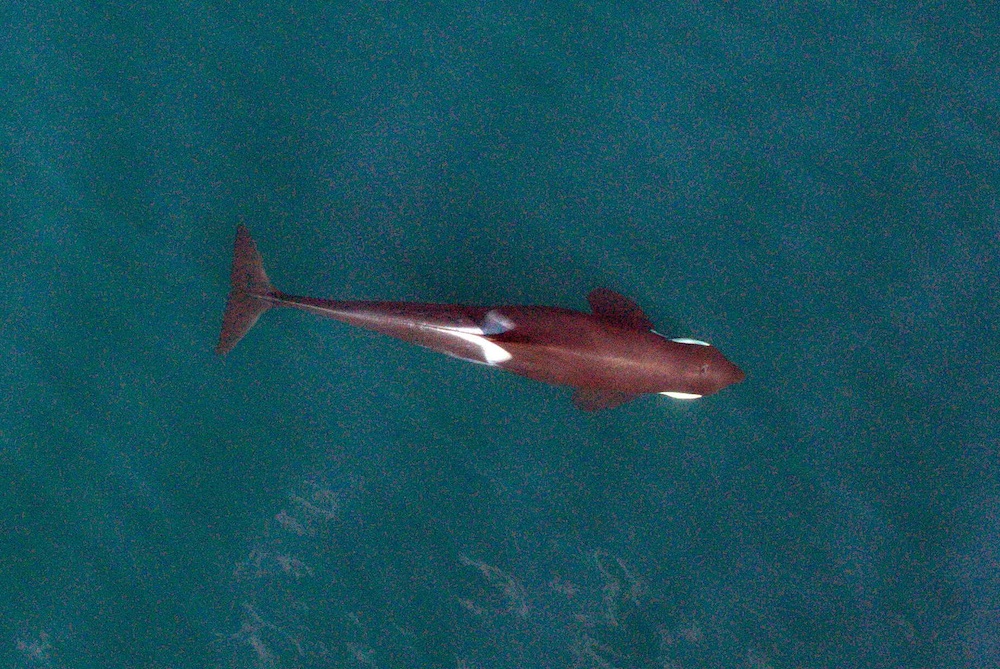A tiny robotic drone has captured stunning footage of killer whales off the coast of Canada. The handheld drone captured photos of the whales chasing prey, swimming with dolphins and even head-butting each other. By viewing the whales from the top, scientists are also able to tell which whales are healthy and which are malnourished. The new imagery could help scientists determine exactly how salmon populations affect the killer whales' health. [Read full story on the killer whales]
Killer Whales
The drone was able to get close-ups of 77 northern resident killer whales, as well as five transients, called Bigg's whales. Here, a group of killer whales swimming. (Photo credit: Vancouver Aquarium/NOAA)
Tiny drone
The drone that took the footage (shown here) is a hexacopter that was previously used to study sea lions, penguins and other marine creatures. The team named the drone Mobly. (Photo credit: Vancouver Aquarium/NOAA)
Bird's Eye View
The drone was released by scientists from the Vancouver Aquarium and the National Oceanic and Atmospheric Administration in August, 2014 and captured about 2 weeks of footage. The drone was quieter than the hum from a refrigerator, so it was able to fly fairly low and capture photos of the whales in stunning detail. (Photo credit: Vancouver Aquarium/NOAA)
Get the world’s most fascinating discoveries delivered straight to your inbox.
Whales at Play
Mobly photographed many different types of whale behavior, including social behavior such as the head-butting, shown here. (Photo credit: Vancouver Aquarium/NOAA)
Swimming with dolphins
The drone also captured footage of the killer whales swimming peacefully with dolphins. (Photo credit: Vancouver Aquarium/NOAA)
Whale health
The drone showed which whales were plump and healthy and which were malnourished. Shown here is a robust male. The salmon that the killer whales feed on were plentiful this year, so most whales were fairly healthy.
Skinny female
Not all the whales were in perfect health. Here, a skinny female, called I63 is shown from above. I63 had recently given birth to a newborn calf who died, making the team wonder if she was ill or injured. By the end of the season, I63 and another elderly, skinny whale had gone missing. (Photo credit: Vancouver Aquarium/NOAA)
Follow LiveScience @livescience, Facebook & Google+.

Tia is the editor-in-chief (premium) and was formerly managing editor and senior writer for Live Science. Her work has appeared in Scientific American, Wired.com, Science News and other outlets. She holds a master's degree in bioengineering from the University of Washington, a graduate certificate in science writing from UC Santa Cruz and a bachelor's degree in mechanical engineering from the University of Texas at Austin. Tia was part of a team at the Milwaukee Journal Sentinel that published the Empty Cradles series on preterm births, which won multiple awards, including the 2012 Casey Medal for Meritorious Journalism.


